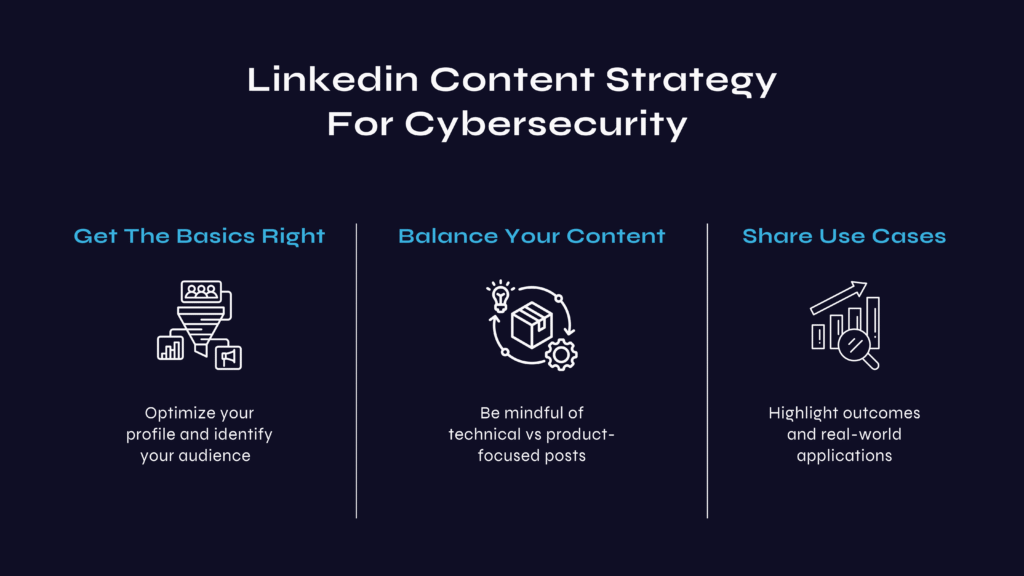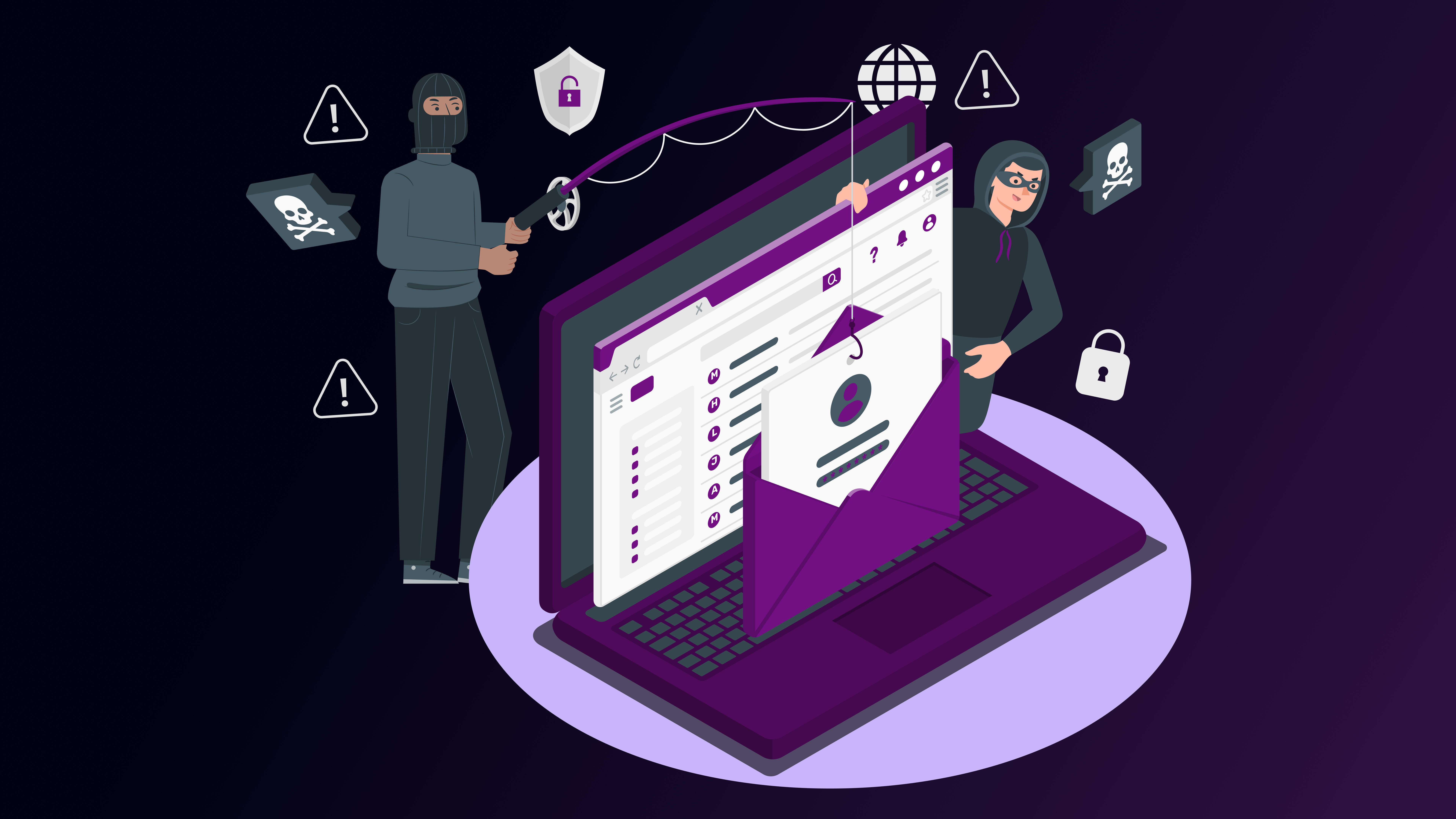LinkedIn has become the de facto platform for professional networking, and for cybersecurity startups, it’s often seen as the holy grail for brand building and lead generation.
You’ve probably seen the influencers who tell you: “Just post about your product, and clients will come.” They make it sound easy, right? But if you’ve tried posting random product updates, generic insights, or thought leadership without much success – you’re not alone.
The truth is, LinkedIn content strategy for cybersecurity isn’t nearly as simple as many influencers make it to be, especially for such a technical niche. You can’t just start posting about EDRs, WAFs, malware, penetration testing or red teaming and expect clients to come knocking.
The market is crowded, the competition is fierce, and without a clear strategy, you’ll be adding to the noise rather than standing out.
In this blog, we’ll break down the a workable LinkedIn content strategy for cybersecurity that any startup really needs and can implement. This blog is part 1 of a series of blogs that pertain to strengthening the Linkedin brand for your cybersecurity startup.
We’ll discuss how to refine your messaging, target the right audience, create content that resonates, and amplify your reach – all while avoiding the common pitfalls.
Because when done right, LinkedIn can be your most powerful tool for brand growth and client acquisition.
The Misconceptions of Cybersecurity LinkedIn Strategy
One of the biggest mistakes cybersecurity founders make is assuming that posting on LinkedIn is straightforward.
The reality is far more nuanced. Not every piece of content will resonate the same way and trying to replicate what influencer content creators do often leads to wasted effort.
LinkedIn doesn’t require every post to be sales-oriented, and in cybersecurity, being too focused on pushing your product can actually turn your audience away.
At the same time, avoiding product mentions entirely isn’t the solution. The key is balance. Some days, your content should be technically heavy – sharing insights on threat detection, pentesting methodologies, or breach post-mortems.
These posts demonstrate expertise and authority, helping your audience see the depth of your technical capability.
On other days, the focus should shift to your product story – showcasing the business value it delivers without overwhelming the reader with technical jargon.
There’s another layer that is often missed: founder storytelling. Sharing your cybersecurity journey, the origin of your product, or the challenges you faced building the solution connects with audiences on a human level.
It helps prospects understand not just what your product does, but why it exists, who stands behind it, and why your team is uniquely capable of delivering results.
The mix of these content types isn’t random; it depends on your product, the stage of your startup, and the specific audience you’re targeting.
A SaaS tool for compliance-heavy mid-market companies may require more technically detailed posts, while an automated phishing simulation platform might benefit from founder-led stories and practical business use-cases.
Understanding these nuances is what separates a LinkedIn presence that drives awareness and engagement from one that’s just noise.

Getting the Basics Right for LinkedIn
Before you focus on content and outreach, it’s crucial to get the fundamentals of your LinkedIn presence in order. Many founders spend too much time obsessing over profile banners or picture polish – while professionalism matters, it’s not what opens doors.
The single most important element is your headline. It’s what people see first in search results, connection requests, and comments. The words you choose need to resonate with your audience and communicate immediate relevance.
If your headline signals the problems you solve and the value you provide, the right people will stop scrolling, read your profile, and engage with you.
Once your profile is optimized, the next step is to define your “audience” precisely. Being vague about titles or companies won’t generate meaningful conversations. Take, for example, a cybersecurity startup offering red teaming services to highly sensitive industries such as finance or healthcare.
Before reaching out to anyone in a particular company, it’s critical to understand the company itself.
Conduct a thorough security evaluation of the organization – look at publicly exposed infrastructure, known vulnerabilities, past breaches, compliance gaps, or risk indicators that are publicly visible through OSINT, security bulletins, or threat intelligence feeds.
This research does two things: it helps you tailor your messaging to their actual needs, and it gives you credibility when you engage.
Only after understanding the company’s security posture should you identify the right contact – often the CISO, cybersecurity lead, or the person responsible for vendor evaluation.
By approaching them with insights that are grounded in the company’s real security challenges, your outreach becomes strategic rather than generic. This preparation ensures that every message you send is informed, relevant, and far more likely to generate interest.
Getting these basics right – your profile headline, precise audience identification, and prior evaluation of the company’s security – lays a strong foundation for all subsequent LinkedIn activity.
Without it, even the best content and outreach strategies will underperform because the context and credibility needed to engage effectively are missing.
LinkedIn Content Strategy and Use-Case Focused Messaging
Once your LinkedIn profile is optimized and your audience clearly defined, the next step is building a content strategy that resonates.
In cybersecurity, posting generic updates rarely works. Sharing insights about malware, firewalls, or compliance frameworks might demonstrate knowledge, but without tying that content to real-world problems and outcomes, decision-makers will scroll past.
A cybersecurity founder needs to approach LinkedIn content as a strategic tool that bridges technical credibility and business relevance.
Start by identifying key use-cases where your product delivers the most value, and let those use-cases shape your messaging. For example, if you offer an EDR platform for SMBs, a core use-case could be enabling small IT teams to detect and contain endpoint threats without hiring additional staff.
A post highlighting how your tool reduces alert fatigue or improves mean time to detect resonates with IT managers and business owners who are responsible for operational continuity but don’t have dedicated security teams.
Similarly, for a phishing simulation platform, a use-case could focus on training employees in high-risk sectors like healthcare or finance to recognize and report phishing attempts.
Content that demonstrates measurable improvements in employee reporting rates or simulated attack success reduction connects with decision-makers more than technical descriptions of your platform’s backend.
Different types of content serve different purposes. Technical deep-dives build credibility with security teams, showing that your platform can handle real-world threats. Outcome-focused posts appeal to decision-makers, highlighting measurable business benefits such as reduced downtime, risk mitigation, and compliance readiness.
Founder storytelling – sharing the motivation behind the product, challenges faced during development, or lessons learned from early deployments—adds the human layer that makes your brand relatable and memorable. By alternating these content types strategically, you can maintain authority while appealing to multiple layers of your target audience.
Video content is particularly effective. Short, practical “how-to” videos on LinkedIn -demonstrating threat detection workflows, phishing simulations, or real-world mitigation strategies – consistently outperform text posts.
Combined with thought leadership articles analyzing breaches or security trends, this creates a layered content strategy that educates, engages, and builds trust over time.
Finally, all messaging must be consistent across posts, profile content, and outreach. If your content emphasizes improving incident response or employee readiness, your connection requests, follow-up messages, and company updates should reinforce that same value.
This alignment ensures your audience not only notices you but remembers your solution when they face the problems it solves.
If you like this strategy bit, reach out to us for a full-fledged customized strategy just for your business.
Stay tuned for more in this series!





